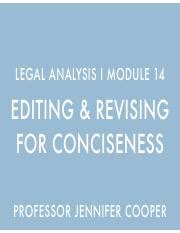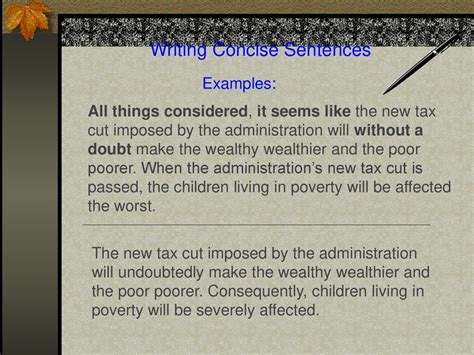The Power of Precision: Why Conciseness Matters
In a world saturated with information, capturing and holding your reader’s attention is more challenging than ever. Long, rambling sentences and paragraphs laden with superfluous words not only bore your audience but also dilute your message. The goal of effective writing is not to fill space, but to convey ideas with maximum clarity and impact. Cutting wordiness is the single most effective way to elevate your prose from acceptable to exceptional, making your writing sharp, authoritative, and compelling.
Concise writing respects your reader’s time and intellect. It ensures that every word serves a purpose, driving your point home with efficiency and elegance. When you eliminate the unnecessary, what remains is the core of your message, strong and undeniable. This isn’t about shortening your work arbitrarily; it’s about refining it until every sentence shines with clarity and purpose.

Identifying the Culprits: Common Sources of Wordiness
Before you can cut wordiness, you need to know where to find it. Many common writing habits, though seemingly innocuous, can subtly bloat your prose. Becoming adept at spotting these linguistic landmines is the first step toward achieving conciseness.
1. Redundancy and Repetition
- Unnecessary Synonyms: Phrases like “basic fundamentals,” “past history,” or “true facts” are redundant. Fundamentals are basic; history is past; facts are true.
- Repeated Ideas: Saying the same thing in different ways within a short span weakens your argument.
2. Weak Nouns and Verbs with Prepositional Phrases
Often, a strong verb can replace an entire phrase. For instance, instead of “make an announcement,” use “announce.” Instead of “give consideration to,” use “consider.” Similarly, long strings of prepositional phrases (“in the event of,” “with regard to”) can often be replaced by single words (“if,” “regarding”).
3. Filler Words and Phrases
These are words that add no meaning and can often be removed without affecting the sentence’s clarity. Examples include “in order to,” “the fact that,” “it is important to note that,” “due to the fact that,” and “at this point in time.” Always ask: does this word or phrase truly contribute?

4. Passive Voice and Nominalizations
While passive voice has its place, overuse can make sentences clunky and indirect. “The ball was thrown by the boy” is less direct than “The boy threw the ball.” Nominalizations (turning verbs into nouns, e.g., “make a decision” instead of “decide”) also add extra words and reduce vigor.
5. Unnecessary Adjectives and Adverbs
Strong nouns and verbs often don’t need help. Instead of “ran very quickly,” consider “sprinted.” Rather than “extremely unique,” remember that something is either unique or it isn’t.
Strategies for Trimming the Fat and Enhancing Impact
Once you’ve identified wordiness, applying strategies to prune your prose becomes intuitive. Think of yourself as a sculptor, chipping away excess material to reveal the powerful form within.
1. Favor Strong Verbs and Nouns
Use active, descriptive verbs. They carry more meaning and inject energy into your writing. Replace weak verb-adverb combinations with a single, potent verb (e.g., “walked slowly” becomes “strolled”).
2. Eliminate Redundancies Ruthlessly
Go through your text specifically looking for repetitive phrases or words that convey the same meaning. If you can remove a word without losing meaning, remove it.

3. Condense Phrases into Single Words
- “At the present time” → “Now”
- “In the event that” → “If”
- “Has the ability to” → “Can”
- “Came to the conclusion that” → “Concluded”
4. Embrace Active Voice
Rewrite sentences in the passive voice to active voice whenever possible. This typically results in fewer words and clearer action.
5. Read Your Work Aloud
Your ears are excellent editors. Reading aloud helps you catch awkward phrasing, lengthy sentences, and unnecessary words that your eyes might skim over. If it sounds clunky, it probably is.
6. Seek External Feedback
A fresh pair of eyes can spot wordiness you’ve become blind to. Ask a trusted colleague or friend to review your work specifically for conciseness.

The Unmistakable Impact of Concise Prose
The effort invested in cutting wordiness pays dividends in multiple ways:
- Enhanced Clarity: Your message becomes crystal clear, leaving no room for misinterpretation.
- Increased Authority: Concise writing projects confidence and expertise. It shows you know what you want to say and how to say it efficiently.
- Greater Engagement: Readers are more likely to stay engaged when they can quickly grasp your points without slogging through unnecessary verbiage.
- Improved Memorability: A sharp, succinct statement is far more memorable than a rambling explanation.
- Professionalism: Polished, concise writing is a hallmark of professionalism in any field.

Conclusion: Write Less, Say More
The journey to concise and impactful prose is an ongoing process of refinement. It requires a critical eye, a willingness to challenge every word, and the courage to cut what doesn’t serve your core message. By diligently identifying and eliminating wordiness, you don’t just shorten your writing; you amplify its power. You transform your words into precision tools that can cut through noise, capture attention, and leave a lasting impression. Embrace the less-is-more philosophy, and watch your writing ascend to new heights of effectiveness.




